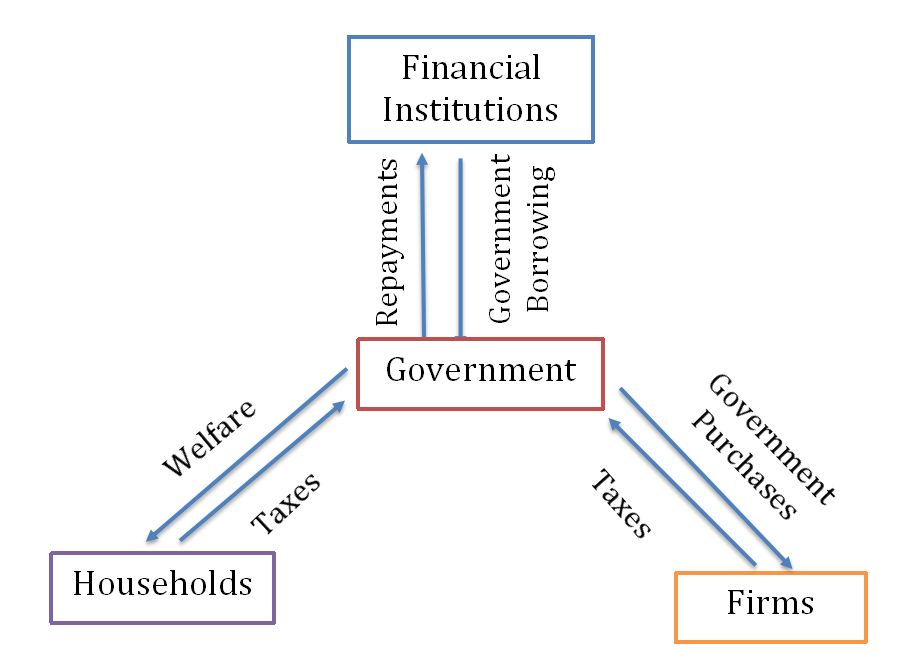
The diagram above shows how money moves into and out of the government from households, firms, and financial institutions.
Summarize the information by selecting and reporting the main features, and make comparisons where relevant.
Write at least 150 words.
The diagram shows the manner in which finance flows to and from the government in various expense and revenue streams. It examines three sectors with which the government deals, namely financial institutions, households, and firms. Dealings with each sector involve both incoming and outgoing payments.
The governmental dealings with financial institutions take the form of borrowing and repayments, with the former being borrowing by the government from the institutions, before repayments are made in return. This simple two-way ‘give and take’ model is replicated in the relationship with the other sectors. When the policy makers work with households, payments are made in the form of benefits and received as taxes. Similarly, the arrangement with firms has money moving away from the centre via government purchases and returning, again, through taxation.
In short, although dealing with a variety of different fields, governmental money flow is invariably both in and out, with the authorities as a central concept. This idea is clearly illustrated in the manner in which the given diagram is designed and presented.